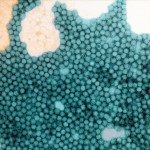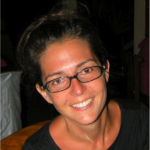Link to Pubmed [PMID] – 39170726
Link to HAL – pasteur-04674711
Link to DOI – 10.1093/ve/veae063
Virus Evol 2024 ; 10(1): veae063
Polioviruses (PVs) are positive strand RNA viruses responsible for poliomyelitis. Many PVs have been isolated and phenotypically characterized in the 1940s-50s for the purpose of identifying attenuated strains that could be used as vaccine strains. Among these historical PVs, only few are genetically characterized. We report here the sequencing of four PV strains stored for more than 60 years in a sealed box. These PVs are cold variants that were selected by Albert Sabin based on their capacity to multiply at relatively low temperatures. Inoculation of permissive cells at 25°C showed that two of the four historical virus stocks still contained infectious particles. Both viruses reached titres that were higher at 25°C than at 37°C, thus demonstrating that they were genuine cold variants. We obtained sequences that span virtually all the genome for three out of the four strains; a short sequence that partly covers the 5′ untranslated region was recovered for the last one. Unexpectedly, the genome of one historical cold variant (which derives from PV-3 Glenn) displayed a very high nucleotide identity (above 95%) with that of a PV strain (PV-3 strain WIV14) sampled in China in 2014 and then classified as a highly evolved vaccine-derived PV. Our analyses made this hypothesis very unlikely and strongly suggested that Glenn and WIV14 shared a very recent common ancestor with one another. Some strains used to produce the inactivated polio vaccine were also very close to Glenn and WIV14 in the capsid-encoding region, but they had not been sequenced beyond the capsid. We therefore sequenced one of these strains, Saukett A, which was available in our collection. Saukett A and WIV14 featured an identity higher than 99% at the nucleotide level. This work provides original data on cold variants that were produced and studied decades ago. It also highlights that sequences of historical PV strains could be crucial to reliably characterize contemporary PVs in case of release from a natural reservoir or from a facility, which is of highest importance for the PV eradication program.







